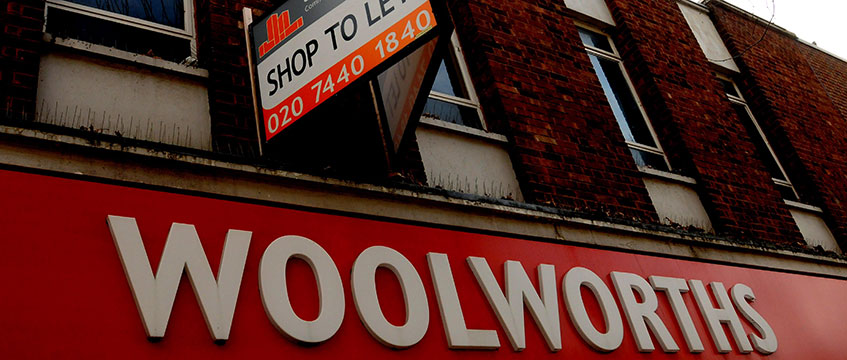Woolworths: 10 years after the collapse
The administration of Woolworths on 27 November 2008 was one of the most dramatic retail collapses in recent memory. Within two months more than 800 of the UK’s best-loved stores shut, costing around 27,000 people their jobs.
Once a jewel in the crown of any British high street, its financial woes and subsequent collapse surprised landlords, analysts and consumers alike.
With 2018 dubbed “year of the CVA”, as more than 18m sq ft of prime retail space is relinquished across some 1,500 stores, we use Radius Data Exchange to look back at some of the numbers and, more importantly, find out what has happened to all those empty units a decade on.
The administration of Woolworths on 27 November 2008 was one of the most dramatic retail collapses in recent memory. Within two months more than 800 of the UK’s best-loved stores shut, costing around 27,000 people their jobs.
Once a jewel in the crown of any British high street, its financial woes and subsequent collapse surprised landlords, analysts and consumers alike.
With 2018 dubbed “year of the CVA”, as more than 18m sq ft of prime retail space is relinquished across some 1,500 stores, we use Radius Data Exchange to look back at some of the numbers and, more importantly, find out what has happened to all those empty units a decade on.
What is your former Woolworths store now?
What has happened?
The Woolworths portfolio stretched across 816 stores, totalling more than 7.4m sq ft of prime retail space.
A whopping 14% of the former Woolworths estate is currently occupied by Poundland stores, while Iceland has taken 8% and B&M Bargains has taken 6%.
In terms of the specific retail sector types, unsurprisingly, value chains are now the largest occupant of space, operating from 277 former stores, more than one-third of the entire portfolio. Fashion brands and supermarket chains are the other largest beneficiaries of the glut of space that appeared.
Full occupancy of the estate is nearly complete – with only nine stores left vacant at the time of writing, though some of those have actually been demolished.
What can we learn?
So, can what happened in the aftermath of Woolworths’ failure help us understand what might happen moving into 2019 and beyond? What is going to happen with all that empty space?
With such a hefty proportion of the stores being eaten up by fashion and value retailers over the past decade, it seems likely that we could expect the same proliferation of uptake with many of the empty units from retailers on the high street this year, especially with brands like Maplin, Carphone Warehouse and Poundworld fitting the bill size-wise.
However, with the value sector coming under increasing pressure from cannibalisation, in a post-2008 reality, one would suspect those heady-expansion days are over.
Department stores have come under increased scrutiny this year, too – House of Fraser and Debenhams having well-published financial difficulties, consolidating as they fight to stay relevant in an age of online spend.
At the time of writing, we might expect around 70 huge anchor stores to become available within the next year or so.
Who’s going to step in here? We could expect some of the larger fashion brands to step up, Primark being the best. Or – as we have seen previously with the former estate of BHS, new leisure and entertainment operators to try and woo experiential-seeking millennials.
And, finally, a different type of failure. There have been many retail parks affected by 2018’s retail crisis.
Big-box units occupied by the likes of Toys R Us, Carpetright and Mothercare have started to create gaping holes in once-resilient landlords’ armour.
One potential beneficiary could be the residential sector, especially for those units that are standalone sites and conveniently situated. Or, alternatively, they could be used for last-mile logistics centres and ironically gobbled up by Amazon and other online giants.
With all the hubris of the death of the high street, we must remember that space will be recycled. The natural laws of supply and demand are playing out a lot more quickly against a backdrop of tough trading conditions and even tougher tax regulations.
Recycling space properly
Described by some as an Annus horribilis, the sector is in a period of irreversible change. As spend online breaches the 20% mark, the way we shop has evolved.
There is a definite oversupply of physical retail space but that doesn’t make it completely redundant.
What is needed is for a pro-active approach to repurposing stock away from A1 use, to protect the good stock that is left behind.
Bring people back into central areas by encouraging consumers to come into town centres once again – internet shopping is just so easy.
Introduce more homes, more leisure and entertainment and more community hubs on to the high street to create bustling communities once again.
To send feedback, e-mail james.child@egi.co.uk or tweet @JamesChildEG or @estatesgazette











